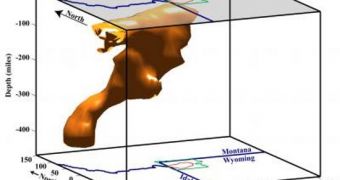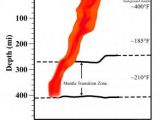Yellowstone was determined many years ago to be the caldera of a massive supervolcano, one so large that, if it were to blow up, it would cover the entire United States with feet of ash in just days. Geologists have also been interested in the formation, as it is one of the few volcanoes of this size out there, which can still be considered active. For the first time ever, experts were recently able to conduct a full survey of the “plumbing system” that feeds Yellowstone, a feat that could answer a lot of the questions experts have on the gigantic formation, e! Science News reports.
Details of the impressive, new work appear in the latest issue of the respected scientific Journal of Volcanology and Geothermal Research. Four research papers explain the intricate workings of the supervolcano, and all of these separate investigations were funded with grants awarded by the US National Science Foundation (NSF). The general study, called the Yellowstone Geodynamics Project, saw the use of more than 160 temporary and permanent seismic stations. At times, their number reached 200, experts say. The work was carried out between 1999 and 2006.
The Yellowstone caldera itself is the remnant of a massive eruption that took place more than 642,000 years ago. According to some experts, it was about 1,000 times stronger than that of Mt Saint Helen's, and covered half of the US in a thick layer of ash and other volcanic debris. The 40-mile-by-25-mile caldera that can be seen today is all that was left after that explosion.
“We have a clear image, using seismic waves from earthquakes, showing a mantle plume that extends from beneath Yellowstone,” the coordinating scientist for the Yellowstone Volcano Observatory, Robert B. Smith, says of the work. He is also a University of Utah professor emeritus of geophysics, and the leader of the investigation.
The new images reveal that the magma body – located just underneath the supervolcano's caldera – “is an elongated structure that looks like a banana with the ends up. It is a lot larger than we thought; I would say about 20 percent [by volume]. This would argue there might be a larger magma source available for a future eruption,” Smith says. He explains that the new images were obtained by analyzing the differences between the Earth's gravitational pull at various locations around the caldera.

 14 DAY TRIAL //
14 DAY TRIAL // 
